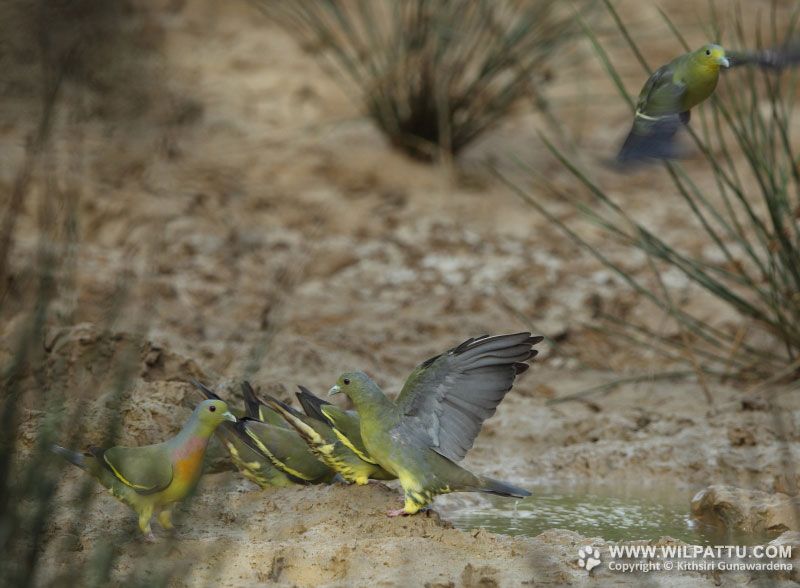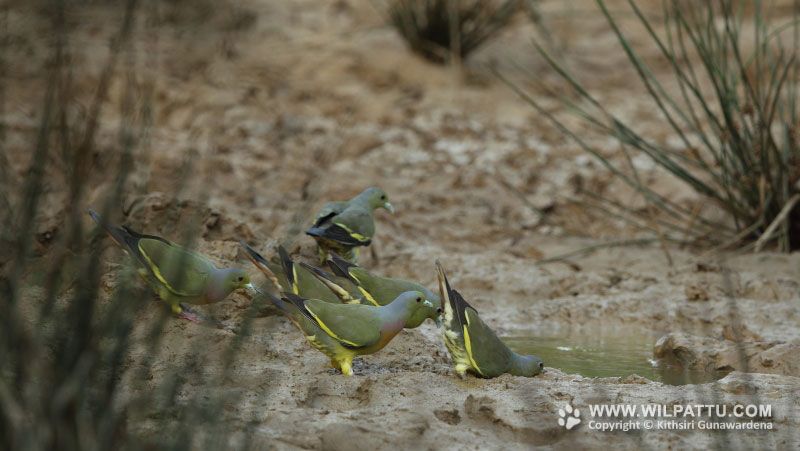
Birds ‹‹ Go Back
This is a resident breeding species found primarily in the dry lowland areas of the country. Small populations have been reported from some locations in the wet zone as well. Four subspecies have been recognized: T. b. leggei is endemic to Sri Lanka. T. b. bicincta is found in India, Myanmar, Thailand, southern Laos, southern and central Vietnam and northern Malaysia, T. b. domvilii is confined to the Hainan Island and the fourth, T .b. javana occupies Java and Bali.
The conservation status of the species under reference is regarded as Least Concerned (National Red List 2012).
This is a species protected under the Fauna and Flora Protection Ordinance as amended by Act No. 22 of 2009.
These beautiful pigeons can be found throughout the low country dry zone. I have seen them at all the dry zone national parks and forested areas. In the North I have seen them in the Veruvil Forest at Nachchikudah just below Pooneryn, the Manalkadu area in the Jaffna Peninsula and in the Palmyrah forests of the Mannar Island. They are quite common in the southern dry zone areas as well. I have never met with them in the hills. In the wet zone I have seen these birds only on a handful of occasions. My first sighting of these birds in the wet zone was at Ratnapura in October 1995. Thereafter, I observed two birds at Mulatiyana Forest Reserve in June 2006. At Balapitiya while on a river safari I observed a flock of 6 birds birds flying along Maduganga in May 2008. In December 2009 I was thrilled to count a small flock of nine birds at the Talangama Wetlands just outside Colombo. Again two birds were seen at Bolgoda in February 2010 and in March 2012 one bird was seen at Nawalakanda, Elpitiya.
During the fruiting season these birds will congregate in large numbers on trees with ripe berries such as Nuga, Ficus sp, Palu, Madan and Weera. They are extremely fond of the berries of Heen–eraminiya Ziziphus oenoplia and when these thorny vines bear fruit at national parks such as Udawalawa, Yala, Wasgomuwa and Kumana, these birds will flock to them in their hundreds.
As in the case of most wild pigeons, the nest is a small platform made of a few sticks, which can barely hold the eggs.
This is a very common species at Wilpattu and they can be seen and heard during any visit. However they are quite shy and photographing them presents quite a challenge requiring a lot of patience and in having to use a long telephoto lens. During the dry months of the year however, they will visit small pools of water throughout the day.


